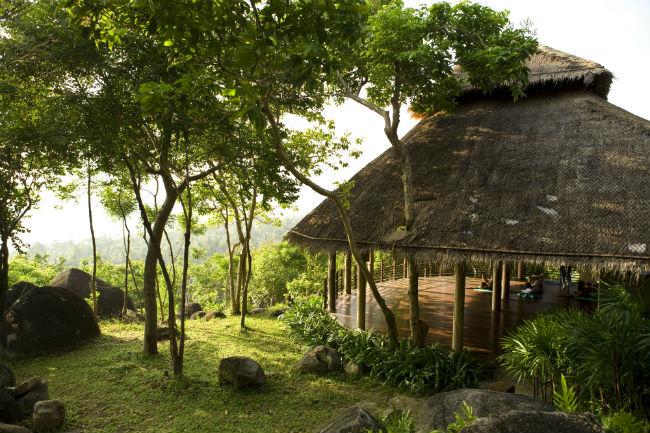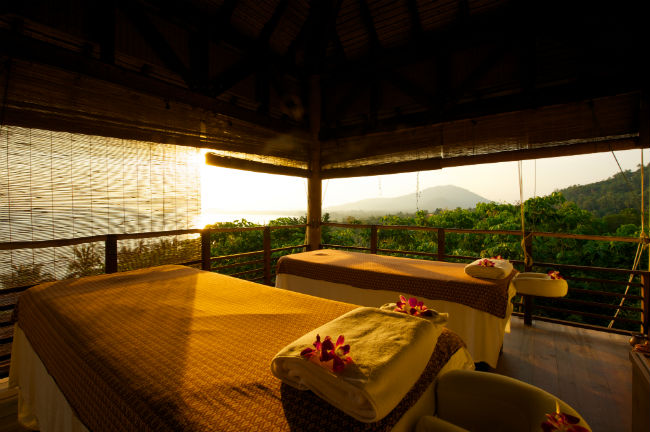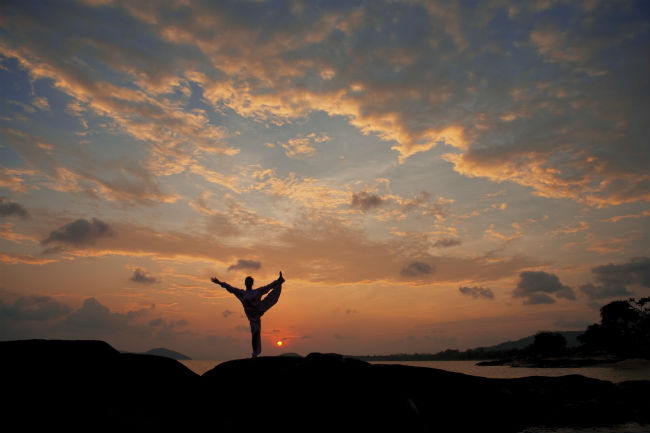The wellness way
As wellness becomes a clearer focus for spas across the world, Kamalaya founder Karina Stewart tells Professional Spa & Wellness why authentic programmes that work on an emotional level are the key to business growth.
WORDS EVE OXBERRY
With a boom in wellness packages now sweeping Europe, spas that offer a holistic but medical approach to health and wellbeing seem set for future growth. Having seen a 40% spike in revenue growth last year at the Kamalaya Wellness Sanctuary and Holistic Spa in Koh Samui Thailand, Karina Stewart is certainly backing wellness as the key driver of growth in the spa market.
“The wellness industry internationally is growing from a billion to a trillion dollar market because people are being educated and are also becoming disenchanted with western medicine. That will continue and that's influencing our growth,” she says.
Stewart set up Kamalaya in 2005 with her husband John Stewart, a doctor of traditional Chinese medicine. The spa’s philosophy is based around personalised wellness programmes to help clients achieve a particular goal using a combination of alternative therapies such as naturopathy, Ayurveda and traditional Chinese medicine.
Eastern outlook
Taking inspiration from Eastern spa culture may seem passé to many spas in the Western world – gone are the days of Oriental-themed treatment rooms in every city centre spa. However, one reason so many of those themed spas updated their offers is that the original concept was not done with authenticity; a trap Stewart suggests many spas are now falling into while trying to jump on the wellness bandwagon.

“The wellness consumer in highly educated, with an above average income. The authenticity has to be there or they will pick it up immediately,” she says. “It has to evolve around your core competencies so if you’re a spa that specialises in facials it makes sense to start by adding nutrition rather than yoga.”
Grounded in traditional Chinese medicine, Kamalaya’s offering is certainly authentic, but Stewart puts its recent success down to its modern focus on results. “People are seeking out holistic experiences with proven benefits now. They are becoming more educated but also disenchanted with Western medicine,” says Stewart. All visits to Kamalaya begin with a naturopathic consultation before a programme is tailored to suit the individual client. Some book a package in advance, which is then adapted on arrival, while others book in and develop a programme from scratch with the doctor.”
Emotional rescue
The spa has just introduced its eleventh wellness programme, designed to help with sleep issues. “Exercise, diet and sleep are our three core pillars of wellbeing,” says Stewart.
“As with all our packages, the new programme is a blend of naturopathy, Ayurveda, acupuncture and traditional Chinese medicine. We're already using all these practices but we're now tailoring them to specifically help sleep. It's like having a palette of 40 colours – you can create many different pictures.”

Other packages on offer fall under the main headings of detox, yoga, fitness, weight management and stress − with introductory and more advanced programmes for each goal.
Once the sleep package has bedded in, next on the agenda is a suite of programmes to help guests on a deeper emotional level. “We have the team in place now to create wellness programmes that help guests cope with life events such as divorce, death of a loved one or even the pressure to be a ‘super woman’,” says Stewart.
The idea for these new lifestyle support packages was born in part from the growing popularity of the stress and burnout programmes, as frazzled European execs check in to redress the work life balance. “Detox is still the most popular programme and accounts for 45% of bookings,” says Stewart. “But the number of clients booking stress and burnout has seen the biggest increase – 10% over the past 12 months and up across all geographical markets.”
World of wellness
However, there are big geographical variations in the results clients are looking for. Kamalya’s guests from the UK, Switzerland and Germany usually come for detox. However, Stewart says the concept is less understood in Asia, where people are more interested in yoga and Australia, where it’s all about stress management, weight loss and fitness.
The UK is by far the biggest market for Kamalaya, accounting for 30% of bookings. Europe as a whole provides 60%, with Switzerland and Germany also big markets for wellness tourism.
“About 12% come from the US, which is surprising because it’s so far for them to travel,” says Stewart. “However, at the moment we're seeing the biggest growth from Australia and the Netherlands. The local market remains very small as Thai people with money are more interested in Western brands.”

Cementing its status on the international spa scene, Kamalaya won Destination Spa of the Year: Asia & Australasia at the first World Spa & Wellness Awards earlier this year.
“We always promote it when we win an award but we got more press coverage from winning the World Spa Award than from any other,” says Stewart. “I think that’s because it's UK based, is an international scheme and has such well-respected industry judges. We were particularly excited to win this one because it is decided by the industry.”
As wellness continues to grow in popularity, Stewart is concerned that the term will be misused, resulting in confused consumers and a need for clearer marketing. “Spas that focus on western medicine and employ doctors are now calling themselves wellness centres and that is far removed from what we do,” she says. “It’s difficult to spell out the differences when people use the same language.”
However, she is adamant that wellness is the logical direction for spa development. “Spas now have the amazing opportunity to become life education centres. Rather than just delivering services, spas can improve quality of life by teaching people how to do that themselves. I'd like to see that happen in the spa industry and I think it will.”
Kamalaya Facts
35% of Kamalaya’s guests are men
60% hail from Europe
45% of bookings are for detox packages
Turnover at the spa grew 40% year-on-year in 2011

